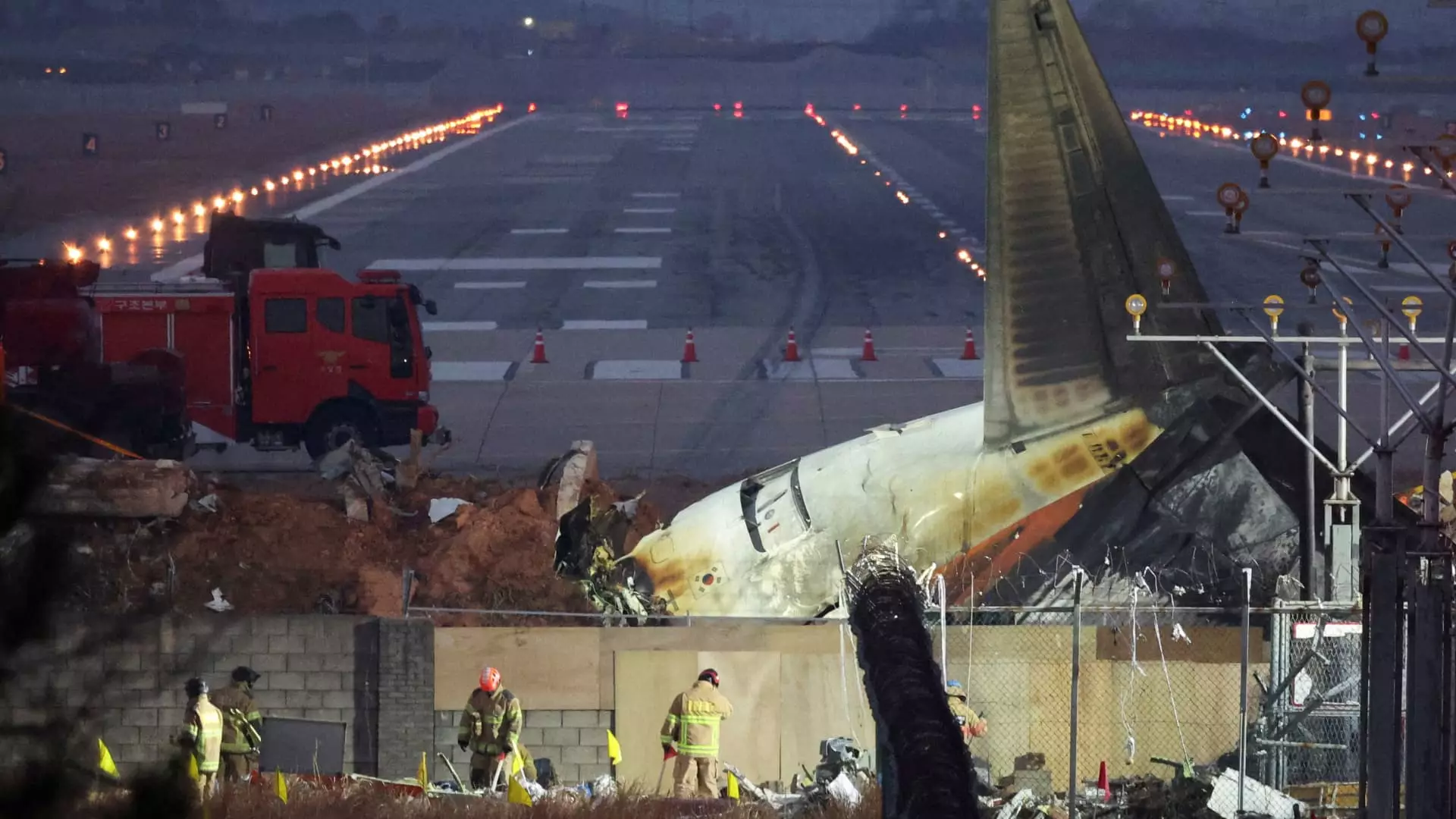The catastrophic landing of Jeju Air Flight 7C2216, which resulted in the death of nearly all passengers on board, has thrown a spotlight on critical aviation safety practices and airport design. The Boeing 737-800 experienced a belly landing after a routine overnight flight, leading to an explosive collision with an earthen mound and a concrete barrier situated just beyond the runway’s edge. This incident raises grave concerns about the adequacy of safety measures in place, particularly regarding how such barriers might contribute to an accident’s severity.
Reports indicate that the aircraft landed with both its landing gear and flaps retracted, suggesting a possible malfunction or grave piloting error. Compounding this issue, preliminary analyses hint at a possible bird strike that may have impeded engine performance prior to landing. This multifaceted scenario illustrates the complexity of aviation incidents, requiring investigators to delve into various elements—from maintenance logs to pilot workloads. However, the decisive blow came when the aircraft made contact with the solid wall, leading to a tragic escalation in casualties.
A major point of contention emerging from this disaster is the design of the airport’s safety features. Aviation experts have asserted that while some airports employ engineered material arresting systems (EMAS) to effectively decelerate overrunning aircraft, the barriers at Muan International Airport were not similarly designed. Without frangible barriers that can absorb impact and dissipate energy, a collision with a solid concrete wall significantly heightens the risk of fatal injuries. Aviation consultant John Cox pointed out that the injuries sustained by passengers were likely due to blunt force trauma from this impact, a pain point that raises questions on how similar risks can be mitigated in the future.
Navigating the aftermath of the crash will not be a swift process. Investigators face the daunting task of examining myriad factors that contribute to such incidents. They will sift through data from cockpit voice recorders, airspeed indications, and maintenance records, while also scrutinizing the sequence of pilot actions leading up to the landing. Understanding these dynamics is vital not only for attributing responsibility but also for crafting future preventive measures.
This tragedy serves as a sober reminder of the imperative for continual advancements in aviation safety standards. Streamlining airport designs to ensure that safety barriers are not only present but also capable of absorbing impact could be vital in preventing similar disasters. The aviation industry must prioritize effective communication and collaboration between aircraft manufacturers, airport authorities, and safety regulators. The ultimate goal must remain clear: to minimize human loss and ensure that our skies become safer for all who travel within them. Avionics innovation, improved training protocols for pilots, and practical design modifications stand as possible solutions to learn from this heart-wrenching event.
As investigators begin the lengthy process of uncovering details surrounding the Jeju Air disaster, the broader implications for aviation safety cannot be overlooked. The questions raised about airport design and structural safety may resonate across the globe, urging a reevaluation of current practices. This tragedy must not only inform regulatory changes but also serve as a catalyst for a renewed commitment to safeguarding air travel.


Leave a Reply